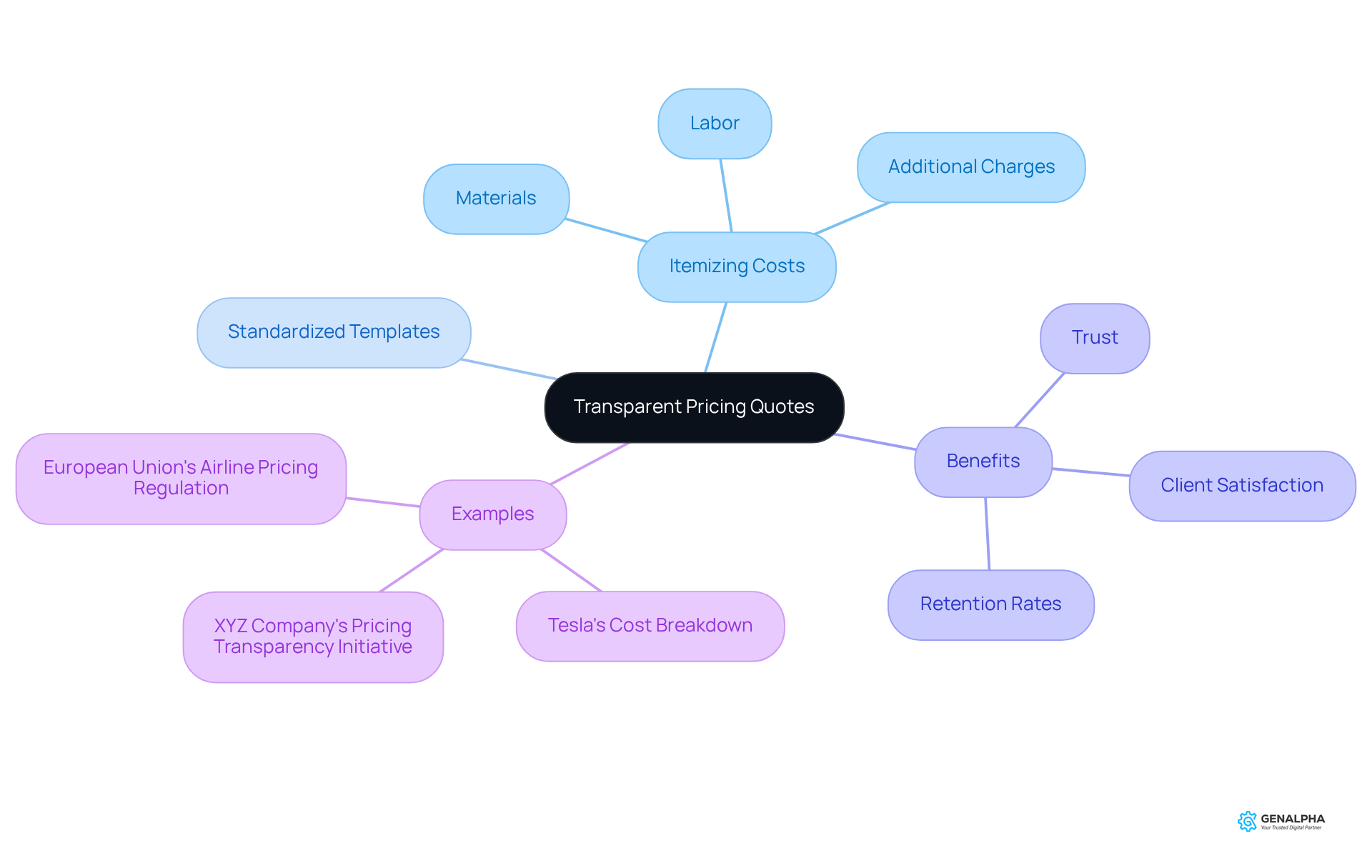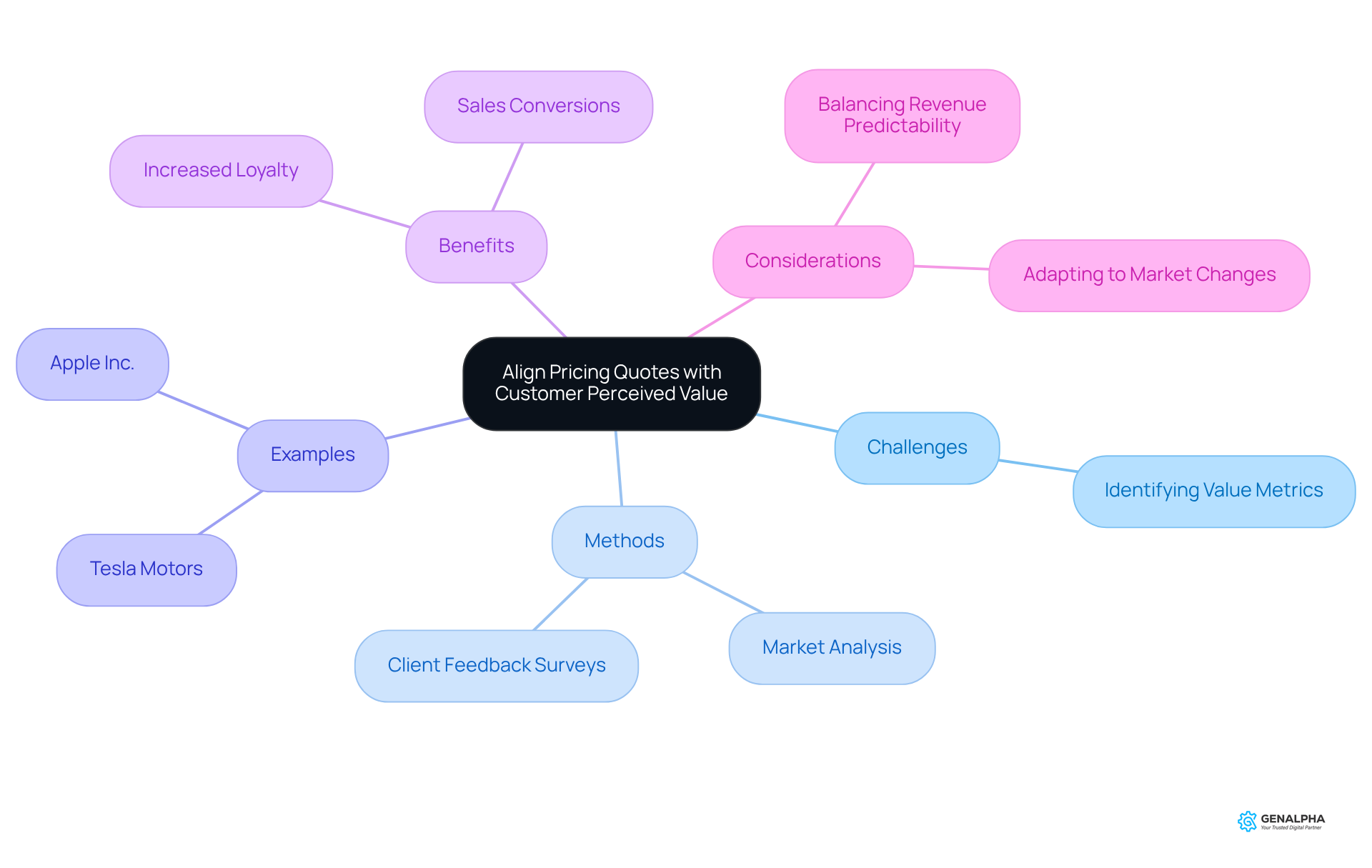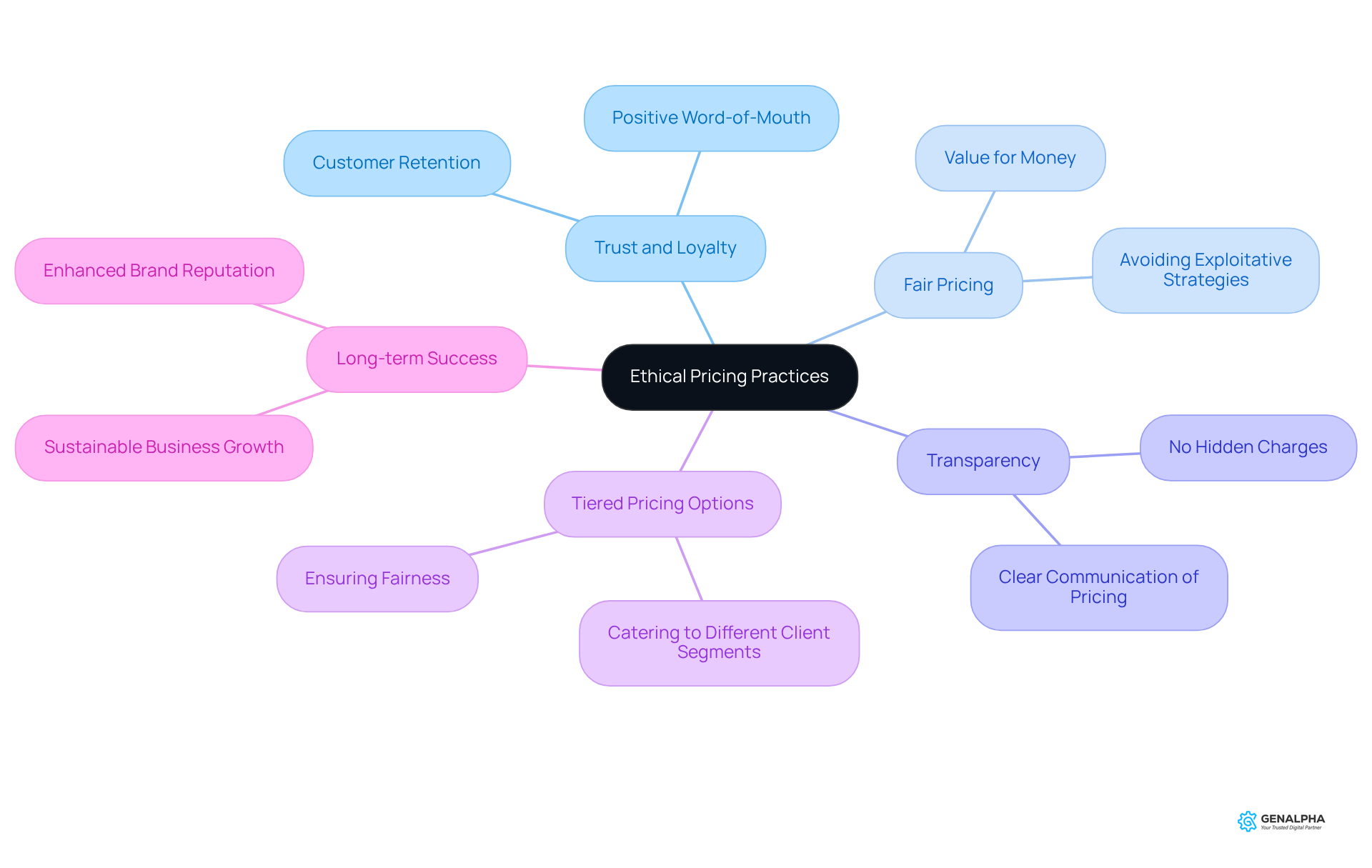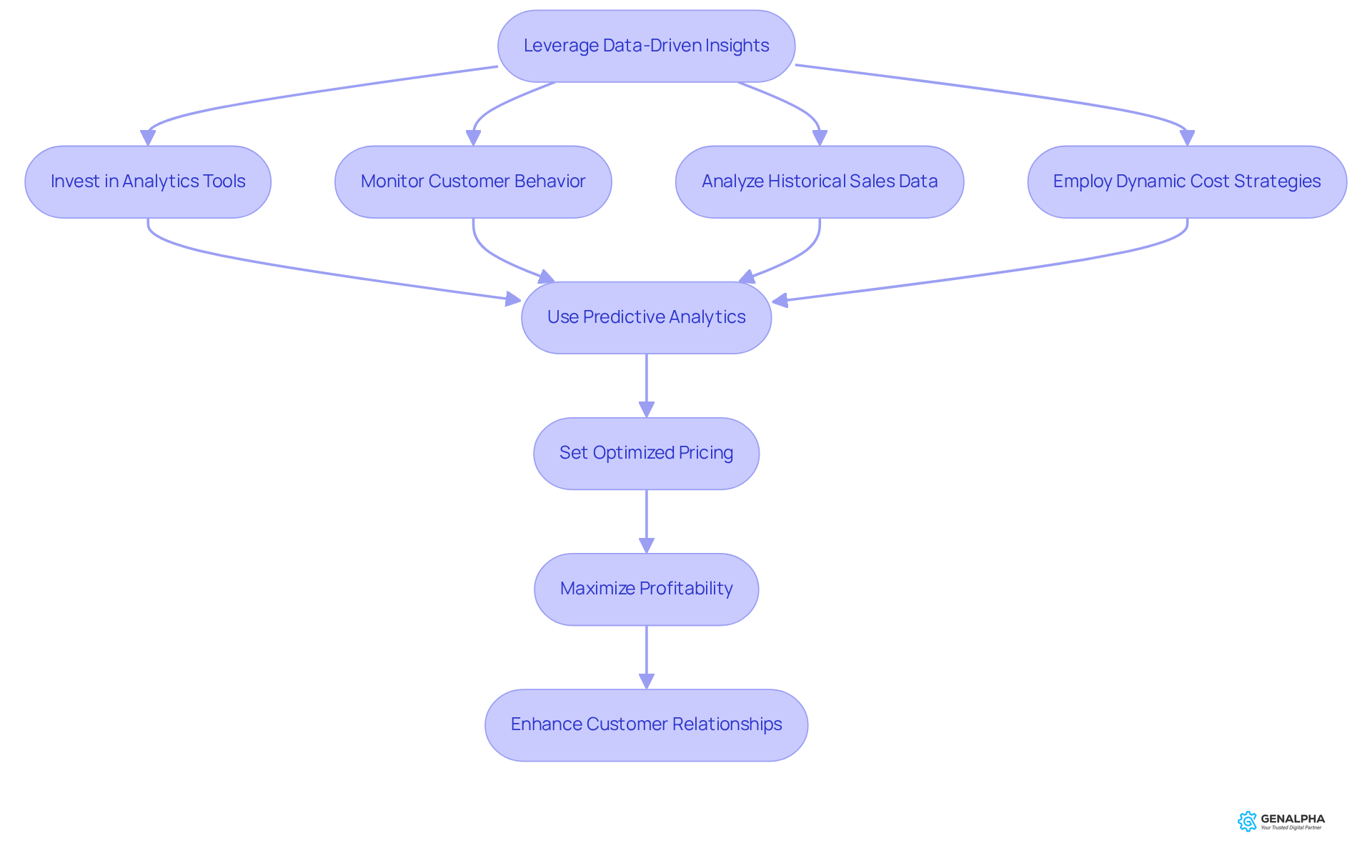Overview
The article highlights the critical role of transparent and ethical pricing practices, alongside data-driven insights, in fostering trust and loyalty within the business landscape.
In an era where customers demand clarity, providing clear, itemized quotes and aligning prices with perceived value is essential. This approach not only cultivates reliable client relationships but also enhances overall customer satisfaction.
Notable examples, such as Tesla, illustrate the profound impact of ethical pricing, especially during crises. Businesses must recognize the importance of these practices to thrive and build lasting connections with their clients.
Introduction
In a marketplace increasingly defined by consumer skepticism, the importance of transparent pricing is paramount. Companies that prioritize clarity in their cost estimates not only cultivate trust but also enhance customer loyalty, laying the groundwork for enduring relationships. Yet, how can businesses effectively align their pricing strategies with customer perceptions of value while upholding ethical standards? This article explores insightful quotes and strategies that illuminate the pathway to building trust and loyalty through transparent, ethical pricing practices.
Establish Trust Through Transparent Pricing Quotes
To cultivate trust, companies must ensure their are clear and devoid of hidden fees. This can be achieved by itemizing costs and providing a detailed breakdown of services included in the quotes on pricing. For instance, a manufacturer might present quotes on pricing that specify the costs of materials, labor, and any additional charges. Such transparency not only reassures clients but also positions the company as trustworthy and dependable.
Furthermore, employing a standardized template for cost estimates can enhance clarity and consistency, fostering a reliable relationship with clients. Studies indicate that clear costs foster trust and improve client satisfaction, as companies emphasizing cost transparency experience greater client retention rates and satisfaction metrics.
Firms like Tesla exemplify this method by offering thorough cost analyses, which boost consumer trust and underscore the value of their products. By adopting [detailed cost estimates](https://blog.genalpha.com/10-benefits-of-cpq-tools-for-equipment-manufacturers), businesses can effectively strengthen relationships with their clients, resulting in increased loyalty and repeat transactions. Moreover, clear costs promote healthy competition within sectors, motivating firms to compete based on quality and service. Conversely, neglecting to implement detailed cost estimates can lead to confusion and discontent, ultimately damaging client relationships.

Align Pricing Quotes with Customer Perceived Value
Aligning costs with client perceived worth is a significant challenge in today's competitive market, particularly when evaluating quotes on pricing. To address this, companies must engage in and actively collect client feedback. This can include implementing surveys that evaluate how clients perceive the value of products or services relative to their costs.
For instance, a distributor may discover that clients prioritize timely delivery and exceptional service, prompting the company to adjust its pricing strategy to reflect these critical values. A notable example is Tesla Motors, which adeptly aligns its costs with client perceived worth, thereby enhancing its market position.
By applying value-oriented strategies, firms ensure that their pricing, as indicated by quotes on pricing, aligns with client expectations, ultimately improving perceived worth. Companies that successfully synchronize their costs with perceived value often experience increased customer loyalty and enhanced sales conversions, which can be informed by quotes on pricing.
Research indicates that businesses employing value-based strategies can elevate their return on sales by an average of 5 to 10 percent. As Erez Agmon aptly notes, "Value-based cost setting aligns price with the actual utility and impact a product delivers."
It is crucial to recognize the challenges inherent in this approach, such as pinpointing the appropriate value metrics, to maintain a balanced perspective on its implementation.

Implement Ethical Pricing Practices to Build Loyalty
Establishing trust and loyalty among clients is essential, and implementing ethical pricing practices, such as providing quotes on pricing, plays a key role in this. This involves setting costs that are fair and reasonable, steering clear of exploitative strategies or hidden charges. For example, during the COVID-19 pandemic, some companies charged as much as $250 for hand sanitizer, which severely undermined customer trust.
Companies must communicate transparently about their pricing strategies by providing quotes on pricing that elucidate how prices reflect the quality of materials and craftsmanship involved in their products. A producer might detail how their pricing framework is designed to ensure value while upholding high standards.
Moreover, offering tiered pricing options can effectively cater to various client segments by providing quotes on pricing that ensure fairness throughout. Companies that prioritize ethical pricing often witness increased client loyalty, as consumers value the integrity and transparency highlighted in quotes on pricing.
As Mark Stiving notes, balancing business objectives with ethical pricing is crucial for long-term success. This commitment not only but also promotes positive word-of-mouth referrals, further strengthening client relationships.

Leverage Data-Driven Insights for Pricing Optimization
In today's competitive landscape, businesses face the pressing challenge of cost optimization. To effectively navigate this, investing in advanced analytics tools such as Genialcloud Analysis and Flintfox is essential. These tools monitor customer behavior, sales trends, and competitor costs, providing critical insights. For instance, a distributor can analyze historical sales data to identify peak buying periods, allowing for strategic cost adjustments that enhance revenue. Moreover, employing dynamic cost strategies grounded in real-time data enables companies to remain agile in fluctuating markets.
AI-driven predictive analytics further refines this approach by forecasting consumer demand and cost trends. This capability empowers companies to set optimized pricing based on price elasticity, thereby maximizing profitability. Firms that leverage data analytics in their cost decisions often experience increased profit margins and heightened customer satisfaction, as they can swiftly adapt to market demands and client preferences.
However, organizations must remain vigilant of potential pitfalls, such as hidden costs that can undermine profitability. By adopting this data-driven methodology, businesses not only improve pricing accuracy but also enhance their offerings with quotes on pricing to cultivate stronger customer relationships. To thrive in this evolving market, it is imperative to embrace these and transform insights into actionable strategies.

Conclusion
Transparent pricing is not merely a strategy; it is a vital component for fostering trust and loyalty in business relationships. By clearly itemizing costs and providing detailed breakdowns, companies can eliminate hidden fees and reassess their pricing strategies to align with customer perceptions of value. This proactive approach reassures clients and positions businesses as trustworthy and dependable partners, ultimately enhancing customer satisfaction and retention.
Several key strategies emerge for achieving this goal:
- Implementing transparent pricing practices—such as standardized cost estimates and ethical pricing strategies—establishes a solid foundation for lasting client relationships.
- Companies that leverage data-driven insights to optimize their pricing can adapt to market demands, ensuring their offerings resonate with customer expectations.
- Notable examples, such as Tesla, illustrate the effectiveness of these approaches in enhancing perceived value and building customer loyalty.
In an era where consumer skepticism is prevalent, businesses must prioritize transparency and ethical practices in their pricing strategies. By doing so, they cultivate trust and create a competitive advantage that fosters long-term relationships with clients. Embracing these principles leads to increased loyalty, positive word-of-mouth referrals, and ultimately, a more sustainable business model. The time to act is now—prioritize transparent pricing to secure your business's future.
Frequently Asked Questions
Why is transparent pricing important for companies?
Transparent pricing is important because it cultivates trust with clients by ensuring cost estimates are clear and devoid of hidden fees. This transparency reassures clients and positions the company as trustworthy and dependable.
How can companies achieve transparency in their pricing quotes?
Companies can achieve transparency by itemizing costs and providing a detailed breakdown of services included in the quotes. This includes specifying costs for materials, labor, and any additional charges.
What benefits do standardized templates for cost estimates provide?
Standardized templates enhance clarity and consistency in cost estimates, fostering a reliable relationship with clients and improving overall communication.
How does clear pricing affect client satisfaction and retention?
Clear pricing fosters trust and improves client satisfaction, leading to greater client retention rates as companies emphasizing cost transparency typically experience higher satisfaction metrics.
Can you provide an example of a company that practices transparent pricing?
Tesla is an example of a company that practices transparent pricing by offering thorough cost analyses, which boosts consumer trust and underscores the value of their products.
What are the consequences of neglecting detailed cost estimates?
Neglecting detailed cost estimates can lead to confusion and discontent among clients, ultimately damaging client relationships and reducing loyalty.




